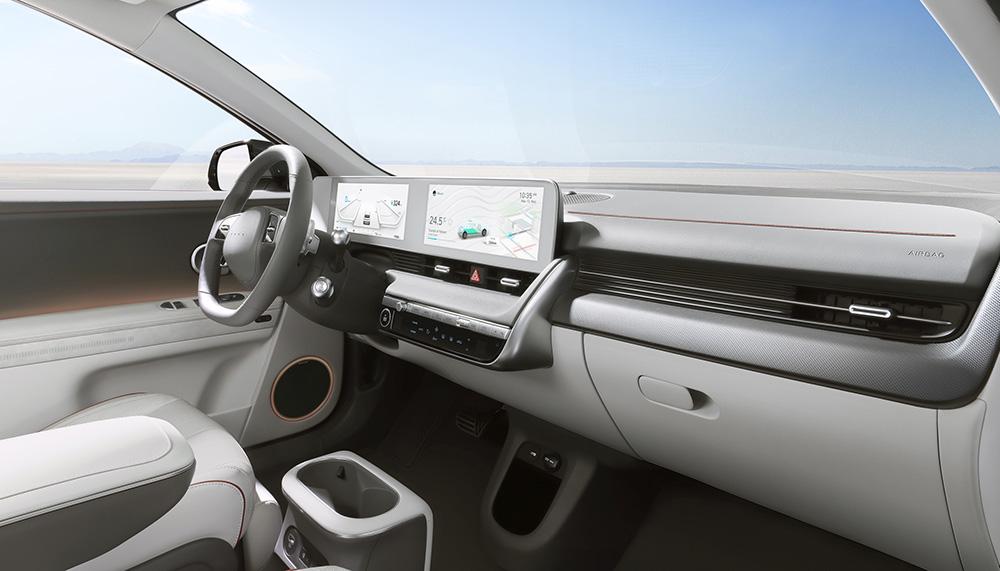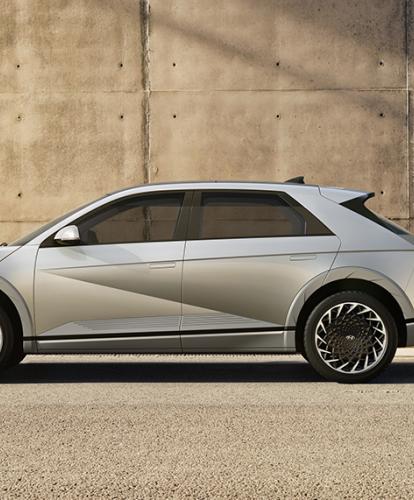The compact SUV from Hyundai’s sub-brand IONIQ is primed to take on electric giants such as Tesla. The IONIQ 5 is built on a dedicated BEV architecture called Electric-Global Modular Platform (E-GMP). This gives it unique proportions on an elongated wheelbase, making it stand out from the crowd.
It’s been designed with aerodynamics in mind with a clam-shell hood that minimises panel gaps. You’ll also find auto-flush door handles, which offer clean, minimal styling while further reducing drag.
Hyundai’s ‘Living Space’ theme runs throughout the interior. The Universal Island is a moveable center console that can slide back as much as 140 mm. Alongside the flat floor, this makes movement inside the vehicle easy, even allowing the driver to slide over to the front passenger seat. The rear seats also slide and the front seats recline too, in case you fancy a nap while you’re parked up.

Many of the IONIQ 5’s interior touchpoints use eco-friendly, sustainably sourced materials. This includes recycled bottles, plant-based yarns, eco-processed leather with plant-based extracts, and bio paint with plant extracts.
The IONIQ 5 is a hatchback shape but the high ride height and size puts it in the crossover category. While it might be quite unique in terms of its looks, it’s set to rival the likes of Tesla, as well as Volkswagen’s ID.3.
In terms of range, you have the option of either a 58 kWh or 72.6 kWh battery pack, the latter giving a range of almost 300 miles. With the option of 350kw charging, the IONIQ 5 could charge from 10 percent to 80 percent in just 18 minutes.
Another exciting feature is the vehicle-to-load (V2L) charging, which allows the IONIQ 5 to act as a charger. This means you can charge any electric device, such as electric bicycles, scooters or camping equipment. The V2L function can supply up to 3.6 kW of power. The V2L port is located under the second-row seats, and it can be activated when a vehicle is on. Another V2L port is located at the charging port on the vehicle exterior. Using a converter, customers can charge high-power electric equipment.



